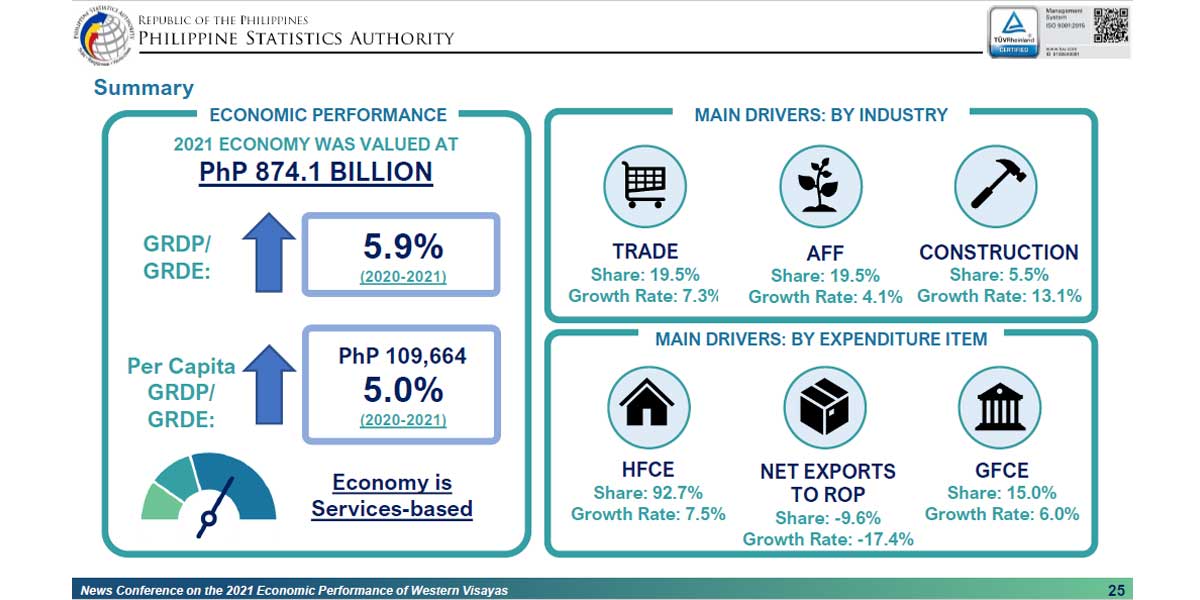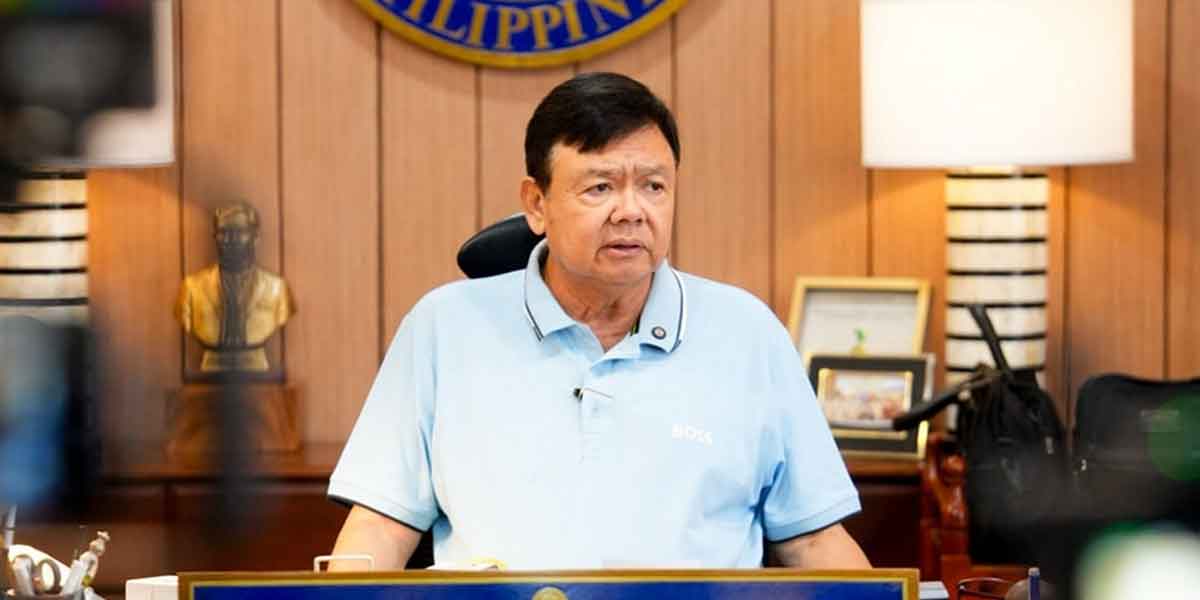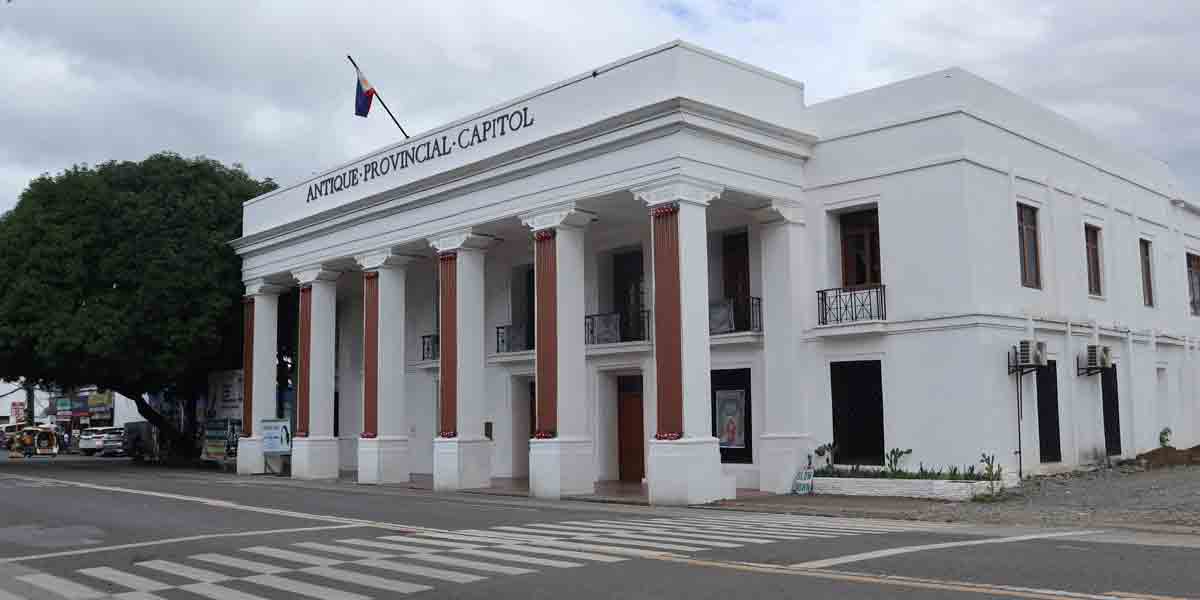
By Francis Allan L. Angelo
The labor sector in Western Visayas can look forward to a better job market with the 5.9 percent growth rate of the region’s economy in 2021, “coming from a bleak situation” back in 2020.
“The year that was in 2021 based on the positive GRDP (gross regional domestic product) of 5.9 percent paints a rosy picture at least for Region 6,” said National Economic and Development Authority Regional Director for Western Visayas Meylene C. Rosales during Thursday’s presentation of the economic performance of the region.
She said that the economy last year has slowly reopened.
The regional director cited the tourism sector for instance, which showed improved job generation from the “joblessness” state.
Based on the region’s economic performance, the services sector which is composed among others of service establishments rebounded by six percent and contributed 3.5 percentage points to the 5.9 percent growth.
“This is a good prospect for our workers,” she said.
Nelida C. Amolar, OIC Regional Director of the Regional Statistical Services Office VI (RSSO VI) of the Philippine Statistical Authority (PSA), in a follow-up interview on Friday, said their data indicated that the region is slowly reaching pre-pandemic employment rate.
“With the help of the tourism-related industries and the construction industry, I know that it will continue. It’s a good outlook for our labor force,” Amolar said.
The performance of the construction industry rebounded by 13.1 percent after declining to 17.8 percent in 2020.
The accommodation and food services also grew by 16.7 percent from the negative 59.5 percent growth rate in 2020.
Citing data from the Department of Labor and Employment (DOLE), Rosales in her presentation said that the employment rate last year increased by 1.3 percentage points, or 93.3 percent from 92.1 percent in 2020, while the unemployment declined by 15.1 percent.
The number of establishments that retrenched workers was also lower by 0.03 percent at 987 while there was a substantial decrease in the number of establishments that stopped operations at 110 against the 204 establishments in 2020.
Underemployment rate, however, was high at 105 percent, which means that while they have jobs, they need additional work to earn enough to be able to provide for their needs.
Value of goods and services in the region also ballooned by almost P50 billion in 2021.
“The total gross value added of the region was recorded at P874.1 billion in 2021 at constant 2018 prices. This was an increase of P48.7 billion from its 2020 level of P825.4 billion,” Amolar added.
She cited that the increase corresponds to the increase also on the region’s GRDP as shown by the growth of industries during the recent year.
Of the 5.9% growth rate, the services industry (trade, financial and insurance activities, education, and others) was the top contributor to region’s economy with 3.5 percentage points; followed by the Industry (manufacturing, construction, among others) with 1.6 percentage points; and Agriculture, Forestry, and Fishing (AFF) industries with 0.8 percentage points.
This growth rate in 2021, according to Amolar, placed Western Visayas in the eighth spot among all the regions and remains the 5th largest economy in the country outside the National Capital Region.
Rosales said the figures is a source of relief for Western Visayas.
“After hearing the presentation earlier, we all heard the good news. So we can now heave a sigh of relief,” said Rosales while citing how the pandemic disrupted the economic and psychological aspects of society.
According to her, the gradual easing of movement restrictions and the opening of industries again like tourism, food, and accommodations contribute to the increase in the economic performance of the region.
Rosales also signified an optimistic prospect of a brighter economy for the region in the next six to 12 months.
“Our recent economic indicators show that the region is on track to recovery as we enter the new normal and as COVID-19 is yet to become endemic. As most of the region deescalated to Alert Level 1, we see more business opportunities coming and the employment status is promising,” she stressed.
She also assures that NEDA is proposing policies to accelerate and sustain economic recovery despite these challenges, especially with the recent issue of oil price hikes that affect most of the regional industries.
On the other hand, PSA RSSO 6 Chief Statistical Specialist Marlene Y. Alviar closed the news conference with a note on the importance of the statistics in determining what to do next by the government and its line agencies.
“Data timeliness and accuracy cannot be overemphasized. Quality statistics lead to quality plans and decisions with the end outcome of quality lives for us all,” Alviar said. (With reports from PNA and PIA)





















